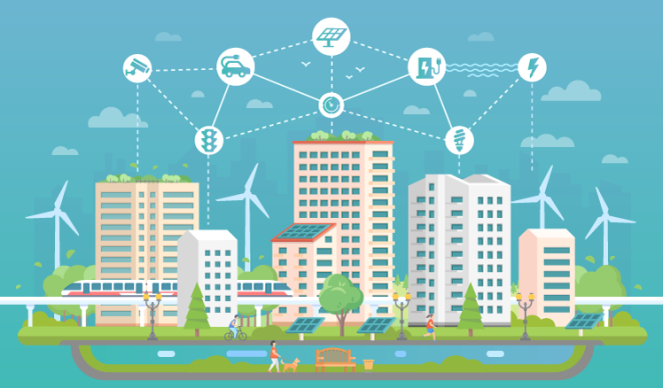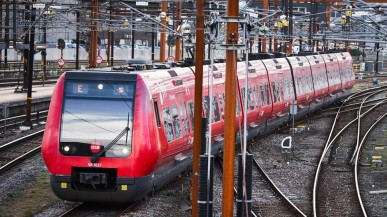Zigurat Global Institute of Technology
Blog / Disruptive Technologies
Smart City and Urbanization Challenges
Categories

 As we are standing before the phenomenon of worldwide urbanization, we might ask ourselves if the urban areas really have space for an additional 2.5 billion people predicted to live there by 2050 and what environmental and social consequences this shift might produce. Smart City initiatives have often been listed as the best strategy to face the numerous challenges that the growth of urban population constitutes and to achieve the global goals of sustainable development. However, in order to be ready to take the bull by the horns, it is important to have an extensive understanding of the inner functioning of a holistic Smart City.
As we are standing before the phenomenon of worldwide urbanization, we might ask ourselves if the urban areas really have space for an additional 2.5 billion people predicted to live there by 2050 and what environmental and social consequences this shift might produce. Smart City initiatives have often been listed as the best strategy to face the numerous challenges that the growth of urban population constitutes and to achieve the global goals of sustainable development. However, in order to be ready to take the bull by the horns, it is important to have an extensive understanding of the inner functioning of a holistic Smart City.
Are Smart Cities the Answer to Urbanization Challenges?
There is nothing new about urbanization, however, since it is projected that in the years to come, the pace of urbanization will be the fastest in low-income and lower-middle-income countries, we must proceed with care and come up with comprehensive strategies to manage the urban growth as sustainably as possible. According to a study by UN, by 2030, the world is projected to have 43 megacities with more than 10 million inhabitants, most of them in developing regions.  Many countries in Asia and Africa will face challenges in meeting the needs of their growing urban populations, including for housing, transportation, energy systems and other infrastructure, as well as for employment and basic services such as education and health care. In this context, integrated policies to manage urban growth that guarantee access to infrastructure and social services for all will become of vital importance. Having access to this type of information should motivate the countries to improve the planning and administration of the city (and even the country), and make them work on a sustainable government plan for development with the aim to maximize the economic opportunities of the population and minimize environmental damage. In order to achieve the correct administration and projection of the improvements in the cities, it is necessary to have an overview of what is happening there and in their surroundings. In this context, as the cities and humanity are on the lookout for the way to proceed, the concept of Smart City gains force as it successfully covers all the key issues, such as:
Many countries in Asia and Africa will face challenges in meeting the needs of their growing urban populations, including for housing, transportation, energy systems and other infrastructure, as well as for employment and basic services such as education and health care. In this context, integrated policies to manage urban growth that guarantee access to infrastructure and social services for all will become of vital importance. Having access to this type of information should motivate the countries to improve the planning and administration of the city (and even the country), and make them work on a sustainable government plan for development with the aim to maximize the economic opportunities of the population and minimize environmental damage. In order to achieve the correct administration and projection of the improvements in the cities, it is necessary to have an overview of what is happening there and in their surroundings. In this context, as the cities and humanity are on the lookout for the way to proceed, the concept of Smart City gains force as it successfully covers all the key issues, such as:
- Sustainable urban development;
- Sustainable building and equipment;
- Infrastructures and mobility;
- Sustainability and circular economy;
- Smart networks infrastructures;
- Provision of urban services;
- Citizens, government and data valorization.
Definition of Smart City
The concept of Smart City appears in the 90s, driven by the development strategies implemented in cities in the Asia-Pacific area, in which Information and Communication Technologies (ICT) play a fundamental role. The proliferation of electronic networks in the city helps to formulate city model on which new growth expectations are placed. This new urban model is identified with the concept of Smart City, the city of the future. We can identify two models of conceptualization of the Smart City. On the one hand, there is the more technocentric approach (promoted by the ICT sector) according to which, urban processes and services can be made more efficient and effective in a connected city. The massive collection of data and its transformation into information through powerful analysis tools allows improving urban management. According to this approach, Smart City can be used for example to describe a city with a “smart” industry. On the other hand, there is a holistic approach to the concept, that associates it with a balance between social, economic, environmental, human, cultural and technological factors. As more and more real Smart City projects are launched, the needs and interests of cities and citizens become clearer, as well as the barriers they face daily. The holistic conception of the Smart City has risen in academia as a response to the challenges the cities must respond to, such as climate change, economic development, efficiency in the use of resources, etc. As a result, the idea of Smart City is today associated with a connected, efficient, innovative "green city", which is the driving force of technology-based entrepreneurship. A model of six axes that all correspond to a set of attributes which help to identify a smart city has been proposed and widely adopted (Giffinger et al, 2007):  As we can observe in the figure above, the holistic vision of a smart city covers all the different facets of urban life from people to the environment.
As we can observe in the figure above, the holistic vision of a smart city covers all the different facets of urban life from people to the environment.
Risks Associated with Smart Cities
When it comes to Smart Cities, one of the greatest criticisms is related to the cities that attribute to themselves the quality of “smart” for commercial purposes. Some cities use the term for urban transformation projects still in progress or after the approval of an initial strategy without having executed or achieved results. As Smart City has an attractive brand image related to it, some cities use it as a communication strategy to promote themselves as innovative. In order to avoid that type of disparity in the use of the Smart City concept, a significant standardization of the typology and scope of the concept is in order. The lack of balance between the interests of the private sector, particularly the ICT sector, and the real needs of the city has been identified as another of the main risks, followed by the lack of real consensus in strategic decision making. The leading role attributed to technology poses a risk for a balanced development of Smart City, as deploying Information and Communication Technologies does not automatically make a city ‘smart’. On the other hand, being ICT-centered might amplify unsustainable behaviors and obsolete development models as the technological deployment is designed to adapt to the behavior of the market and citizens and not to change them. For example, in the case of public transportation, the territorial differences in the availability of infrastructure networks are a factor of social and territorial inequality. The territorial differences in the availability of said networks have paved way to the rise of term ‘Smart Territory’ as opposed to that of ‘Smart City’. Another element characterizing many self-designated smart cities is their underlying emphasis on business-led urban development in general. These cities identify themselves as neo-liberal spaces where the actions carried out in public-private collaboration cover a management model aimed at the development of businesses, minimizing the debate about the conflict of interests. Level of education and access to technology is another factor that could have an imbalancing influence on the gentrification of the city. To sum up, emphasizing technological aspects and economic development only creates greater social and spatial exclusion as it reduces the social considerations and leads to unsustainable cities from the social point of view.
Smart Cities as a Solution for Urbanization Challenges
According to a study by UN, “55% of the world’s population lives in urban areas, a proportion that is expected to increase to 68% by 2050”. With this prediction in mind, we should do everything in our capacity to avoid the above-mentioned risks related to the technocentric approach to Smart City Implementation. The concept of Smart City is multifaceted and during the last years due to the exponential growth of the population, the holistic approach has surfaced as a possible solution to all the problems that this shift entails. Several cities have begun to apply small changes to their city models to improve the quality of life of their citizens and as many of these improvements have been successful, more and more cities are following their steps to apply similar policies and improve the urban life at the grassroots level. 



